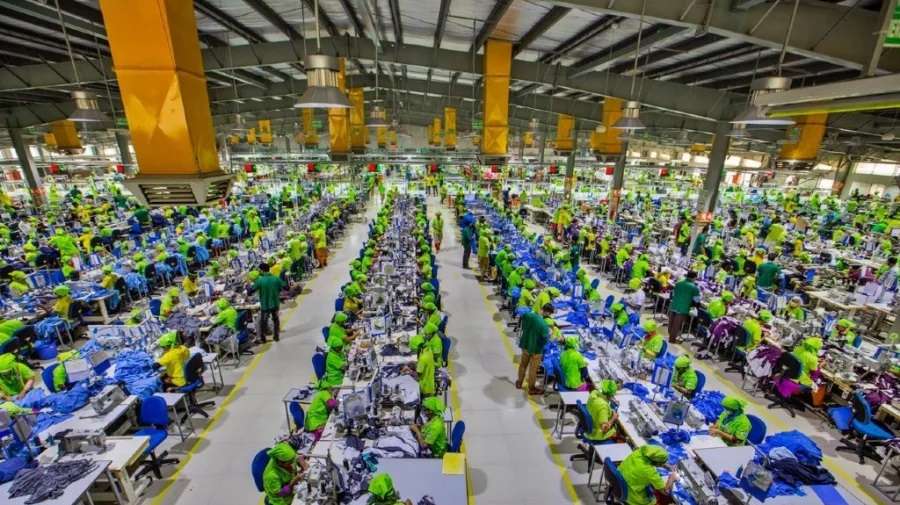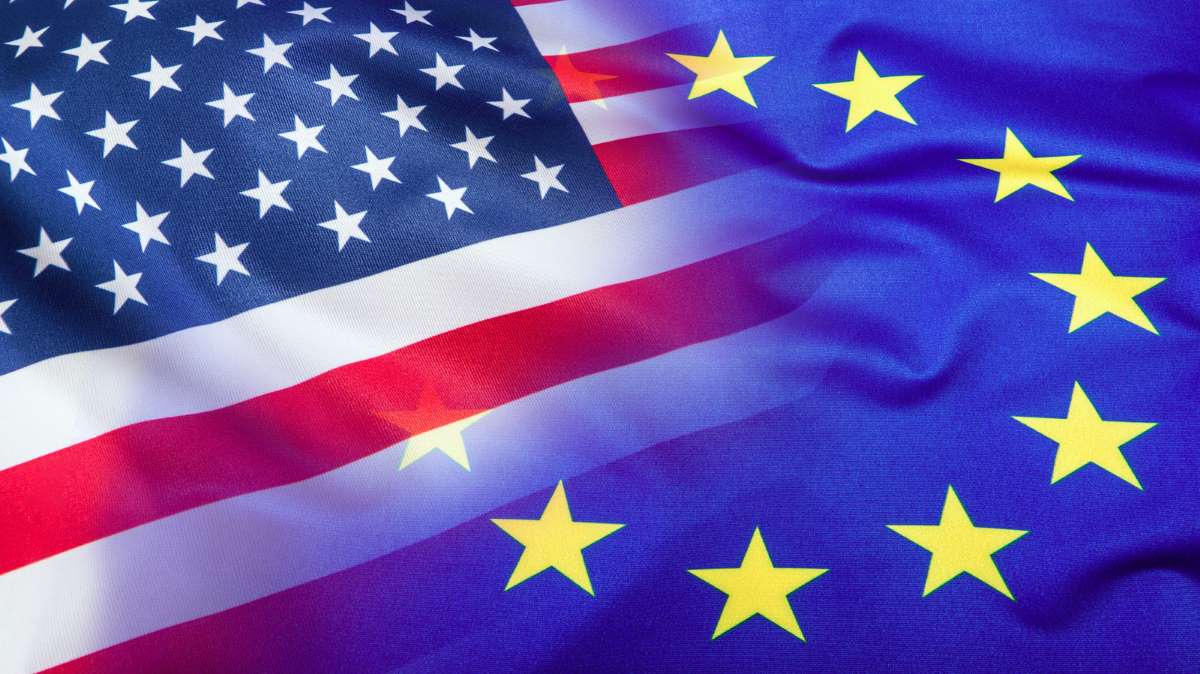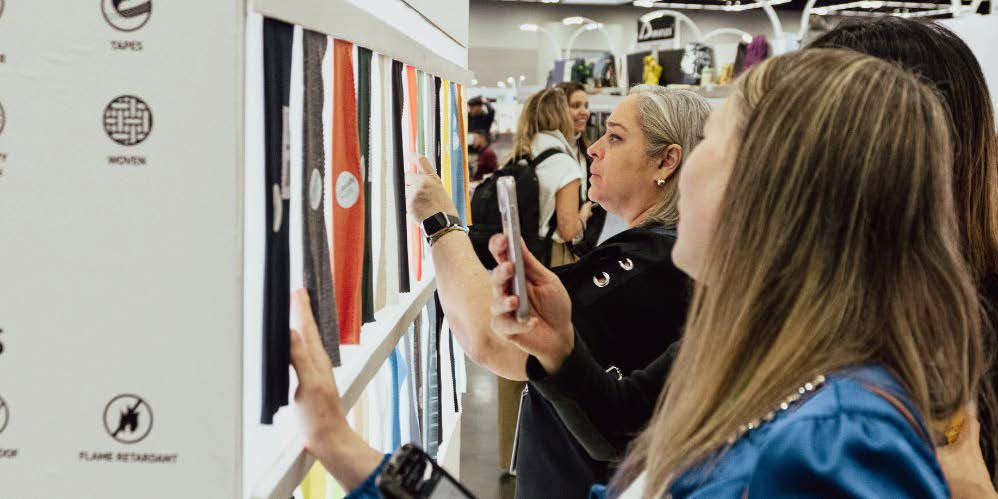FW
Japanese retail giant and the parent company of brands like Uniqlo, Fast Retailing announced strong first-half results and has increased its profit forecast for the full year.
The company's robust performance was primarily driven by strong sales at its flagship Uniqlo brand, both domestically in Japan and internationally. However, the crucial Chinese market presented ongoing challenges.
For H1, FY25 ending in February 2025, Fast Retailing's consolidated revenue grew by 12 per cent to ¥1.79 trillion (approximately $12.5 billion), while operating profit increased by 18.3 per cent to ¥304.22 billion. Net profit also rose significantly to ¥233.566 billion from ¥195.912 billion.
Consequently, the company now projects its full-year consolidated operating profit to increase by 8.8 per cent to ¥545 billion, with consolidated revenue expected to reach ¥3.4 trillion, a 9.5% rise.
The company reported strong first-half performance in Japan, North America, Europe, and Southeast Asia. Revenues of Uniqlo Japan increased by 11.6 per cent to ¥541.5 billion while operating profit expanded by 26.4 per cent to ¥97.6 billion. The brand’s comparable sales, including online, rose by 9.8 per cent, attributed to strategically aligning product development and marketing with weather conditions, leading to strong sales of year-round items and thermal wear, as well as increased sales to tourists. Improved gross profit margins, due to stricter discounting, also contributed.
The revenue of Uniqlo International increased by 14.7 per cent to ¥1.0141 trillion while operating profit expanded by 11.7 per cent to ¥168.5 billion. Southeast Asia, India and Australia, North America, and Europe reported particularly strong gains.
However, revenues in mainland China's fell by around 4 per cent while operating profit contracted by roughly 11 per cent due to weak consumer demand and an unsuitable product mix for varying regional temperatures. The brand’s revenues and profit from Hong Kong also declined, while Taiwan reported higher revenue and profit.
Archroma, a global leader in specialty chemicals for sustainable textiles, will unveil its latest innovations at China Interdye 2025, focusing on performance-driven, low-impact solutions. The company will spotlight its High IQ Lasting Color program and Phobotex range of durable water-repellent finishes, underscoring its commitment to vibrant, long-lasting garments with reduced environmental footprint.
The High IQ Lasting Color program integrates Archroma’s cutting-edge Avitera SE and Novacron dyes, offering enhanced color retention while significantly reducing water and energy use up to 50 per cent less in processing. Updated with modern hangtags and labels, the program helps mills and brands deliver intense, lasting colors while aligning with sustainability goals.
Archroma will also highlight its Phobotex range of fluorine-free DWR finishes, known for long-lasting water repellency and fabric comfort. Developed using renewable raw materials, Phobotex supports the shift toward non-PFC textile treatments. The range features bio-based options and hydro polymers that are easy to apply, ensuring high performance across diverse textile applications from everyday stain protection to extreme weather resistance.
“China remains central to global textile manufacturing, and the demand for sustainable, high-performance solutions is growing,” said Christine Cai, Vice President of North Asia, Archroma Textile Effects. “Our solutions empower brands to deliver garments that are functional, durable, and environmentally responsible.”
China Interdye 2025, the world’s largest exhibition dedicated to dyes and textile chemicals, will be held from April 16-18 at the Shanghai World Expo Exhibition and Convention Center. Attendees can visit Archroma at Hall 1, Booth A101, to explore innovations that advance sustainability without compromising quality.
A major global producer of viscose staple fiber products, Asia Pacific Rayon (APR) showcased its latest viscose and lyocell innovations at the SaigonTex 2025 trade show this week.
This showcase was a part of the company’s broader initiative to foster a more sustainable textile industry in Vietnam.
At the trade show, APR shared its views on how the use and adoption of sustainable textile fibers, such as viscose and lyocell, can contribute to the long-term growth of Vietnam's textile sector.
Characterized by increasing production levels and a skilled workforce, Vietnam has become a significant regional textile hub in recent years,. The country represents a substantial market for both viscose and lyocell products. According to industry research, the global market for viscose and lyocell is projected to grow by 6 per cent-10 per cent annually through 2030.
By 2030, APR aims to become a world-class VSF manufacturer, consistently exceeding many requirements of the European Union Best Available Techniques (EU BAT) and ZDHC MMCF guidelines, setting a high standard for sustainable viscose production.
The rising global demand for sustainable textiles presents a key opportunity for APR to broaden the reach of its viscose and lyocell products and strengthen its presence in Vietnam, a strategically important market for the company in the region.
Sachin Malik, Head – Commercial, Asia Pacific Rayon, observes, there is a strong interest in APR’s viscose and Lyocell by Sateri. Increasing the awareness and adoption of these fibers will help establish Vietnam as a hub for sustainable textiles.
APR's booth, themed ‘Experience Lyocell, Feel the Difference,’ was the central attraction at SaigonTex 2025. The company displayed latest advancements in APR viscose and Lyocell by Sateri fibers, emphasizing responsible production and eco-friendly fashion for a wide range of applications.
Visitors to the APR booth are able to experience the unique properties of these fibers firsthand and learn about the company’s dedication to driving positive change within the textile industry. The success of this exhibition reinforces APR's commitment to Vietnam and the growth of the country’s textile sector.
A major global producer of viscose staple fiber products, Asia Pacific Rayon (APR) showcased its latest viscose and lyocell innovations at the SaigonTex 2025 trade show this week.
This showcase was a part of the company’s broader initiative to foster a more sustainable textile industry in Vietnam.
At the trade show, APR shared its views on how the use and adoption of sustainable textile fibers, such as viscose and lyocell, can contribute to the long-term growth of Vietnam's textile sector.
Characterized by increasing production levels and a skilled workforce, Vietnam has become a significant regional textile hub in recent years,. The country represents a substantial market for both viscose and lyocell products. According to industry research, the global market for viscose and lyocell is projected to grow by 6 per cent-10 per cent annually through 2030.
By 2030, APR aims to become a world-class VSF manufacturer, consistently exceeding many requirements of the European Union Best Available Techniques (EU BAT) and ZDHC MMCF guidelines, setting a high standard for sustainable viscose production.
The rising global demand for sustainable textiles presents a key opportunity for APR to broaden the reach of its viscose and lyocell products and strengthen its presence in Vietnam, a strategically important market for the company in the region.
Sachin Malik, Head – Commercial, Asia Pacific Rayon, observes, there is a strong interest in APR’s viscose and Lyocell by Sateri. Increasing the awareness and adoption of these fibers will help establish Vietnam as a hub for sustainable textiles.
APR's booth, themed ‘Experience Lyocell, Feel the Difference,’ was the central attraction at SaigonTex 2025. The company displayed latest advancements in APR viscose and Lyocell by Sateri fibers, emphasizing responsible production and eco-friendly fashion for a wide range of applications.
Visitors to the APR booth are able to experience the unique properties of these fibers firsthand and learn about the company’s dedication to driving positive change within the textile industry. The success of this exhibition reinforces APR's commitment to Vietnam and the growth of the country’s textile sector.
Bangladesh's apparel exports to the United States rose by 26.64 per cent in the first two months of 2025 spanning January and February) outpacing all its major competitors. This growth is attributed to US buyers increasingly shifting their orders away from China.
According to official trade data, Bangladesh's apparel exports to the US increased to $1.5 billion during January-February 2025 from $1.18 billion in the same period last year. This robust growth has positioned Bangladesh as the third-largest supplier of clothing to the US, trailing only China and Vietnam.
While apparel exports by China and Vietnam also increased by 8.85 per cent and 11.14 per cent respectively, driven by competive pricing, improved adherence to labor and environmental standards and a rise in order Bangladesh experienced the most substantial growth.
However, industry leaders are expressing caution due to the potential impact of renewed trade tensions under a possible Abdullah Hil Rakib, Former Senior Vice President, Bangladesh Garment Manufacturers and Exporters Association (BGMEA), notes. the encouraging growth but emphasized the increasing volatility of the trade environment. He highlighted the difficulty in planning long-term investments and predicting order flows due to tariff politics in Washington.
Apparel imports by the US from global sources increased by 11.20 per cent to $13.55 billion in the first two months of 2025, marking. India and Pakistan also experienced significant gains of 25.70 per cent and 23.05 per cent respectively, while some countries, like Honduras, faced a sharp decline of 20.86 per cent, illustrating the evolving dynamics of the global sourcing landscape.
Trade experts caution that a more protectionist US stance could lead to increased scrutiny of trade benefits, although Bangladesh's apparel sector currently operates under a different regime.
Currently, Bangladesh is capitalizing on this opportunity, but the future remains uncertain. Stakeholders believe that long-term growth will depend on the US's approach to its evolving trade policies and Bangladesh's ability to maintain its position as a stable, ethical, and high-capacity supplier.

Messe Frankfurt and Concept N Strategies join forces
Messe Frankfurt Trade Fairs India Pvt Ltd has partnered with Concept N Strategies to unveil a new addition at Techtextil India 2025 - the ‘Sporttech Pavilion’. This exclusive pavilion will spotlight the dynamic sports and activewear textiles segment, showcasing cutting-edge innovations in high-performance fabrics, accessories, and gear. The initiative aims to elevate India’s presence in the global sports textile landscape while offering a focused platform for exhibitors and buyers seeking the latest advancements in the sector.
With the Indian sports and fitness textiles market undergoing a major transformation, this collaboration is expected to drive innovation, sustainability, and growth. It will provide a significant boost to domestic manufacturers aiming to expand their reach and will align with the government’s vision of self-reliance and technical textile development. The Sporttech Pavilion is set to serve as a key enabler for showcasing India's growing capabilities in high-quality performance textiles.
Driving demand and market growth
Driven by evolving consumer lifestyles, rising health awareness, and demand for sustainable materials, the Indian sportswear sector is witnessing remarkable momentum. Innovations in moisture-wicking fabrics, compression wear, and breathable textiles are at the forefront of this growth.
Industry reports show that India’s sportswear market, valued at $10.2 million in 2024, is projected to grow to $16.6 million by 2033 at a CAGR of 5.1 per cent. Globally, the sector is estimated to expand from $206.64 billion in 2024 to $350.45 billion by 2032, with a CAGR of 7.84 per cent.
In light of these trends, Techtextil India 2025 offers the perfect platform to highlight innovations and foster partnerships. The pavilion will showcase sustainable fabrics, smart textiles embedded with fitness sensors, performance-enhancing coatings, and textile-based sports equipment like yoga mats and resistance bands. It will also feature textile machinery and technologies that support testing, dyeing, and finishing of activewear.
Connecting Innovation with Global Markets
The Sporttech Pavilion will cater to an expanded exhibitor profile including producers of breathable and recycled sports textiles, manufacturers of footwear and fitness accessories using innovative materials, and developers of smart wearables. Chemical suppliers offering advanced finishes such as anti-odour and UV protection will also be part of the showcase.
The pavilion is expected to attract visitors from across the value chain retailers, product developers, fashion designers, textile technologists, sourcing professionals, and fitness enthusiasts all looking for the next breakthrough in sportswear innovation. Messe Frankfurt’s global reach and Concept N Strategies’ industry insight will provide exhibitors with new business opportunities, market access, and international exposure.
In addition to Sporttech, Techtextil India 2025 will also feature the second edition of MEDITEX, in collaboration with the South India Textile Research Association (SITRA), focusing on medical textiles. Together, these initiatives mark a major step in positioning India as a global leader in technical and performance textiles.

The narrative surrounding China's luxury market has been rife with talks of a slowdown. However, a recent report by DLG (Digital Luxury Group) firmly rejects this notion. “We fundamentally reject this narrative,” states Jacques Roizen, Managing Director, Consulting at DLG. The report highlights that the Chinese luxury market remains crucial and should not be deprioritized by brands. In fact, luxury spending by Chinese consumers grew by an impressive 58 per cent in 2023.
Tmall's strategic importance beyond sales
The report emphasizes the strategic role of Tmall for luxury ‘maisons’ (La maison in French means House) in China, going beyond just an e-commerce platform. Tmall is identified as the most visible consumer touchpoint globally for luxury brands, reducing the reach of physical stores and marketing campaigns. “Tmall flagship stores should not be exclusively or primarily focused on online revenue generation, as they usually are a brand's most visible consumer touchpoint in the world,” the report states.
A key focus of the DLG report is on how luxury brands can maintain and boost their brand image on Tmall. It highlights that a Tmall flagship store offers a unique opportunity to showcase brand universes and connect with a new audience, even influencing offline purchases as 80 per cent of offline luxury customers consult Tmall before buying in-store.
The report showcases examples of luxury brands like Chanel and Hermès, which have successfully leveraged Tmall to boost their brand presentation. These brands prioritize brand storytelling, maintain consistency with their global marketing, and avoid discounts or promotional livestreams.
Take Chanel and Hermès for example, both prominently feature their brand story on their homepage and product detail pages, with links to comprehensive brand introductions. The Tmall flagship stores of these brands align with their global marketing campaigns and offline stores. Chanel and Hermès prioritize elevated storytelling over immediate online transaction benefits. These brands also are among the few luxury maisons that abstain from platform promotions and discounts. And they avoid discount-focused livestreams, recognizing the potential harm to brand equity
Profits and performance marketing
The DLG report also delves into the profitability of Tmall compared to emerging platforms like Douyin/TikTok. While Douyin has seen growth, the report suggests that it often comes at a cost to profitability for global brands. Tmall, on the other hand, offers sustainable revenue and the opportunity for elevated brand introductions.
For example, Tmall delivers 20-45 per cent operating profit margins, while Douyin often struggles to exceed 20 per cent. Tmall has a medium average transaction value, whereas Douyin's livestreams focus on impulse purchases and discounts, leading to very low average ticket values. Moreover, Tmall has medium return and cancellation rates, while Douyin sees higher-than-average return rates due to impulse purchases. And Tmall requires a performance marketing investment of 15-25 per cent of net revenue, compared to Douyin's cost of traffic, which can approach 40 per cent of net revenue.
Furthermore, the DLG report underscores the importance of Customer Relationship Management (CRM) and data integration for luxury brands in China. Tmall's CRM capabilities enable brands to offer exclusive benefits to members and integrate Tmall data with their broader CRM and social media ecosystems. Thus the report advises luxury brands to exercise caution with promotions and discounts, as these can negatively impact brand equity. While some strategies like free samples and installments are acceptable, seasonal discounts, discount-focused livestreams, and excessive free samples should be avoided.
The DLG report advocates for a fundamental reconsideration of Tmall's role in luxury brands' China strategy. It argues that Tmall should be viewed as a critical brand-building platform and customer acquisition engine, not just a sales channel. By leveraging Tmall, focusing on brand storytelling, optimizing performance marketing, and integrating CRM, luxury maisons can unlock their full potential in the Chinese market.

Bangladesh, renowned for its robust garment manufacturing sector, is undergoing a profound transformation towards sustainability. This evolution is underscored by the rapid proliferation of LEED (Leadership in Energy and Environmental Design) certified factories, marking a significant shift beyond sheer production volumes to environmentally responsible practices that resonate globally.
A global leader in green manufacturing
Bangladesh stands tall with the highest number of LEED-certified garment factories worldwide, a testament to its commitment to sustainable industrial growth. As of March 19, the country had 240 LEED-certified factories, including 98 Platinum and 128 Gold certifications. This leadership is further solidified by the presence of 66 factories among the world's top 100 LEED-certified garment facilities, according to the Bangladesh Garment Manufacturers and Exporters Association (BGMEA).
LEED certifications, categorized into Platinum, Gold, Silver, and Certified levels by the U.S. Green Building Council (USGBC), reflect varying degrees of sustainability achievements. Platinum denotes exemplary performance across all categories, followed by Gold, Silver, and Certified levels.
Bangladesh's success is highlighted by the significant number of Platinum and Gold certified garment factories. Specifically, the recent addition of Echotex Limited, Elite Garments Industries, and Euro Knit Spinn, all located in the Gazipur region, has increased the number of Platinum certified factories to 98 and the total number of LEED certified factories to 240. While precise global rankings fluctuate, Bangladesh consistently holds a dominant position in the number of LEED certified garment factories, particularly at the platinum and gold levels.
What makes a factory LEED certified?
Achieving LEED certification necessitates a holistic approach encompassing sustainable site selection, water and energy efficiency, superior indoor environmental quality, and innovation beyond standard practices. These criteria ensure reduced environmental impact and enhanced operational efficiency, reinforcing Bangladesh's stature in global sustainable manufacturing.
Impact of LEED certified factories
Beyond environmental benefits like reduced energy consumption and improved air quality, LEED certification yields substantial economic and social advantages. Lower operational costs, enhanced brand reputation, and improved worker conditions underscore the transformative impact of sustainable practices on Bangladesh's garment industry.
Export benefits of LEED certification
LEED certification has significantly boosted Bangladesh's export competitiveness by aligning with global sustainability trends. The preference for sustainable sourcing among international brands has positioned LEED-certified factories as preferred partners, attracting premium buyers and expanding market access.
For instance, Remi Holdings achieved LEED Platinum through initiatives such as rainwater harvesting and solar energy adoption, resulting in notable cost savings and increased international orders. Such successes illustrate the tangible benefits of sustainability in both economic and environmental terms.
According to the Bangladesh Garment Manufacturers and Exporters Association (BGMEA), the number of LEED certified garment factories in Bangladesh has increased dramatically in recent years. This growth is directly linked to the increasing demand for sustainable products from international buyers. A BGMEA 2023 report stated that "The increase of LEED certified factories has lead to a increase of 15 per cent in orders from European and North American buyers over a 3 year period."
Similarly, a study by the International Finance Corporation (IFC) showed factories that implement energy-efficient technologies can reduce their energy consumption by up to 30 per cent, leading to significant cost savings.
Future outlook
While Bangladesh leads in LEED certifications, challenges persist, including financing barriers and the need for broader sustainability awareness among smaller enterprises. However, ongoing innovation and investment in sustainable technologies promise a bright future, reinforcing Bangladesh's role as a global hub for green garment manufacturing.
Therefore, Bangladesh's journey towards sustainability through LEED certification not only enhances its global competitiveness but also sets a benchmark for ethical and environmentally conscious industrial practices. By continuing to embrace and innovate in sustainable manufacturing, Bangladesh not only secures its economic future but also contributes significantly to a greener global apparel industry.
To explore the potential of milkweed (Asclepias) as a sustainable natural fiber, Ghaziabad-based Northern India Textile Research Association (NITRA) has signed an MoU with the CSIR– National Botanical Research Institute in Lucknow. The collaboration aligns with India’s focus on innovation-driven sustainability in the textile industry.
The partnership between NITRA and NBRI partnership seeks to not only enhance fiber yield and create sustainable sourcing methods but also identify commercially viable applications for the fiber. The institutions believe, the initiative could lead to the development of an alternative raw material base for the Indian textile industry.
The collaboration is also positioned as a step towards Aatmanirbhar Bharat by supporting domestic innovation and reducing dependency on imported synthetic fibres. The project is expected to contribute to long-term environmental and economic resilience in textile manufacturing.
Re-affirming the government’s support for initiatives promoting indigenuous and eco-friendly resources, Giriraj Singh, Union Minister of Textiles, said, the study aims to conduct a genomic analysis of the plant to better understand its structure and enable its use as a viable alternative to synthetic fibers.
Known for being lightweight, insulating and biodegradable, Milkweed fibers are suitable for applications in home furnishings, technical textiles, and clothing insulation. However, they have been rarely used in large-scale manufacturing so far, says the study.
Though Indian leather and textile exporters don’t expect a huge rise in new orders, they see the 90-day tariff reprieve as an opportunity to clear their existing backlogs at reduced tax rates.
Industry sources suggest, weak demand and uncertainty surrounding Washington's ongoing trade talks with other countries are keeping US consumers in a ‘wait-and-see’ mode.
Prabhu Dhamodharan, Head, Indian Texpreneurs Federation (ITF), states, the recent developments could ease current difficulties in dispatching orders. However, the average total tax on consumer goods, including textiles, entering the US is over 20 per cent, indicating continued pressure on spending, he pointed out. This includes a base duty of 10 per cent on all countries and tariffs exceeding 100 per cent on imports from China.
While US President Donald Trump recently postponed the implementation of reciprocal tariffs for 90 days, with the exception of China (which currently faces a 104 per cent tax), the standard 10 per cent duty that took effect on April 5 remains universally applied.
According to A Sakthivel, Vice Chairman of the Apparel Export Promotion Council, the Council can only export based on demand and its existing capacity. Head of the Poppys Knitwear in Tiruppur, Sakthivel says, exporters are focusing on shipping only pending orders during the relief period and that the tariff window might help speed up shipments by about ten days.
He adds, Indian exporters are closely monitoring the conclusion of the US-India bilateral trade agreement (BTA) negotiations, which could benefit the sector in the long run. US buyers now believe that India will receive preferential tariff treatment compared to other Asian nations, particularly China, he states.
The United States imported $107.72 billion worth of textiles in 2024, with $80 billion of that being clothing alone. China held the largest share at 21 per cent, followed by Bangladesh (9 per cent), India (6 per cent), Vietnam (19 per cent), and Sri Lanka (3 per cent). Under the new tariff structure, India’s main competitors, Bangladesh (37 per cent tariff), Sri Lanka (44 per cent tariff), and Vietnam (46 per cent tariff), will all pay significantly higher duties. The United States is currently in negotiations with over 75 countries to reduce their tariffs.
Concerned about order cancellations under the new structure, the leather sector has welcomed the tariff delay, according to Israr Ahmed, Farida Group, a Chennai-based exporter of leather goods. He states, most exporters are currently trying to push through orders within the 90-day window, which aligns with the industry’s order cycle of 90 to 120 days. Even though India’s global leather and footwear sales are relatively small, consumers are starting to realize the need to diversify their purchases away from countries like China and Vietnam, he opines.
According to government data, India exported $4.1 billion worth of leather and leather products between April 2024 and February 2025, with $870 million of that going to the US. Ahmed, Former Vice-President, Federation of Indian Export Organisations (FIEO), believes India will eventually increase its market share—as long as high tariffs on rival nations persist.









